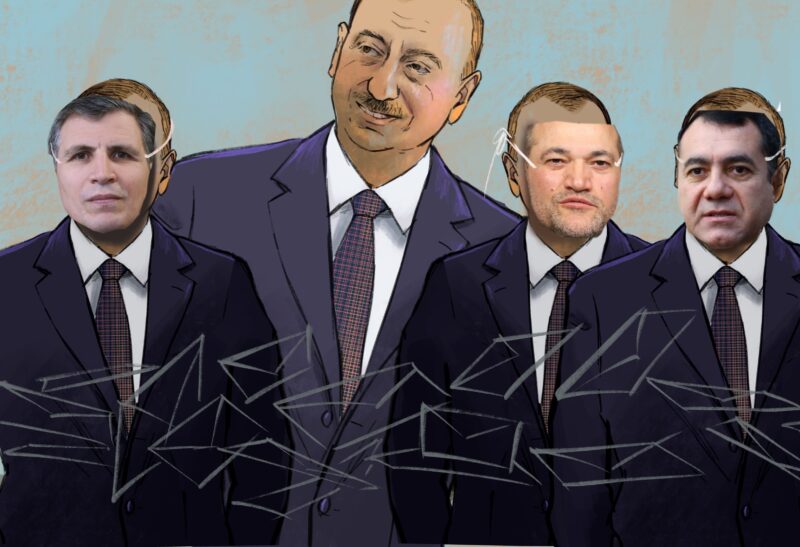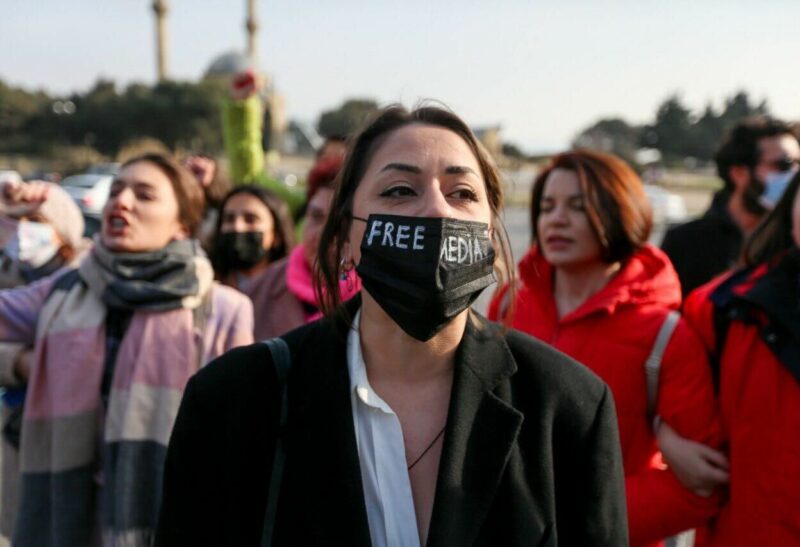In a reformulation of Lenin’s famous expression, we might say that the quotas for oil extraction, about which so much was spoken in OPEC, have been filled.
On November 30, at the OPEC summit in Venice, oil exporting countries managed to agree on restricting oil extraction for the first time since 2008. This move will presumably ensure a rise in oil prices. The primary barrier on the way to the agreement was a disagreement between Saudi Arabia, Iran and Iraq. However, on the eve of the summit, the Saudis made concessions, announcing that they were not opposed to a freeze in oil production by Iran at pre-sanction levels and agreed to reduce their own production by 500,000 barrels a day to 10,060,000 barrels a day. Iran, in turn, agreed to restrict production to 3,800,000 barrels a day, which is lower than the previously-stated 3,900,000, and delayed for half a year plans to reach pre-sanction levels. Iraq will reduce production from 4,560,000 to 4,350,000 barrels a day. The UAE, Kuwait and Qatar together will reduce production to 300,000 barrels.
On the whole, they came together to agree that the flow of extraction shouldn’t exceed 32,500,000 barrels a day. Moreover, countries outside OPEC must reduce their extraction by 600,000 barrels a day and the summit delegates hope that these countries will treat such a proposition with understanding. It has been decided that the quotas for reduction don’t concern Nigeria and Libya, and Indonesia has been excluded from the organization entirely.
Analysts were skeptical about OPEC’s ability to come to an agreement on reduction or freezing of production. The OPEC participant countries have not been overly bothered by concerns regarding the reduction of quotas. According to OPEC’s October monthly overview, extraction volumes increased to record levels of 33.64 million barrels a day, which is 240,000 barrels higher than the September number. Extraction was ramped up most by Nigeria (by 170,200 barrels a day), Libya (by 167,500 barrels a day) and Iraq (by 88,300 barrels a day).
For various reasons, extraction in these countries was low in recent years, and they are naturally striving to increase it in order to not lose market share. Nevertheless, OPEC overcame key disagreements and showed critics that it is more alive than dead. The results of the Venice summit clearly show the end of a policy of “let each pump however much he can”, and if the decisions made are carried out, including the obligations of non-OPEC countries, this will ensure that surplus stock can be done away with, and will raise prices to the level of $50-60.
One reason for doubt in the success of the summit was the fact that the General Secretary of OPEC, Mohammed Barkindo from Nigeria, was appointed to this position just three months ago, on August 1, 2016. However, he showed himself to be an experienced leader. At various times, he has worked in various leadership positions in the Nigerian National Petroleum Corporation and Nigeria Liquefied Natural Gas, and as the Nigerian representative to OPEC, and in 2006 he even played the role of General Secretary.
Nevertheless, doubts remained even after the summit’s conclusion. The main question – will the adopted quotas be fulfilled and who will oversee this – the oil-extracting countries themselves, or some sort of special commission that still needs to be created?
OPEC has a very mixed history of implementing its own quotas. And, even if the oil-extracting countries implement the decision, will this act as a stimulus for increased extraction of shale oil in the USA? It’s already being bought at a price of $40 per barrel, and in the case of $60, he majority of the USA’s oil fields will pay for themselves. To a significant degree, the large quantities of shale oil on the market caused the fall of oil prices two years ago, which forced many companies to cease shale extraction, since expenses exceeded profits. With this growth fo prices, this sort of extraction will once more become profitable, and this might cancel out all OPEC’s efforts. What’s more, even without this, extraction of oil in the USA grew notably, by 2% in October-November 2016, and the number of drill sites in operation increased by 7%. And Donald Trump’s ascent to the White House holds in store a ramping up of fossil fuel extraction in the USA. Over the course of his primaries campaign, he came out in support of energy independence for the USA, the construction of new oil infrastructure, including on the continental shelf, and most importantly, in support of tax breaks for oil companies. And the U.S. Energy Information Administration says that in fall of this year, oil stocks grew more than was expected, by 170,000 barrels a day, the largest growth since May of the previous year. What’s more, the American Geological Service recently announced that the largest oil and gas fields in the history of the United States have been discovered in Texas. Its reserves are around 20 billion barrels of oil, 16 trillion ft
3
of natural gas, and 1.6 billion barrels of natural-gas condensate. The oil market essentially ignored this statement, because there’s a long way to go from discovery to development. Research is needed to evaluate the profitability of extraction at this field, and it’s still early to speak of expanding extraction. But it’s clear that this factor will restrain the potential for price growth, especially since the USA – like Russia, by the way – isn’t a member of OPEC, and isn’t bound by its decisions.
Russia’s position is also unclear. The idea of reduction first came from Russia and Saudi Arabia, but both countries in parallel ramped up production. In the end, Russia exceeded even the Soviet maximums, raising the starting point for discussions about reduction. The average daily extraction of Russian oil in September exceeded 11 million barrels. On October 10, at the energy congress in Istanbul, President Vladimir Putin announced that Russia supports joint measure for restricting extraction and calls on other oil exporters to do so. But just the next day, the head of Rosneft, Igor Sechin, doubted whether his company would cut down on oil extraction, and the Minister of Energy, Alexander Novak, said the same. The largest oil producer in Russia, Lukoil, stated that it will support the decisions made by the Russian Ministry of Energy within the framework of the agreement at the OPEC summit, regarding means of stabilizing oil prices. However, those in OPEC believe that a freeze of Russia’s production at this maximum won’t help a deal, and the agreement by the OPEC countries to reduce oil extraction will enter into force only in the case that Russia also reduces production. This question is slated for discussion with the Russian delegation on December 9 in Doha, and this means that what lies ahead is so far unclear.
The Caspian deserves special attention. After all, Russia is only one of the five Caspian states, of whom only Iran is a member of OPEC. The Caspian countries are already oil-exporting countries, and many regions of the Caspian have yet to be explored. Russian and American geologists disagree on their estimation of the reserves of raw hydrocarbons – oil gas, and gas concentrate. But all agree that they equal around a fifth of world reserves.
At the 20
th
international conference Caspian Oil and Gas 2013, Suleyman Qasimov, the vice-president of SOCAR for economic questions, stated that SOCAR plans to begin developing the potential field Babek (400 billion m
3
gas and 80 million tons of condensate). In 2020 SOCAR intends to begin developing the Karabakh field (20 billion m
3
gas and 20 million tons of condensate), in 2023 the Ashrafi field (13 billion m
3
gas and 17 million tons of condensate). In 2025 development will begin on the Umid marine oilfield. Foreign companies will be involved in the development of other fields. And this is just Azerbaijan. After all, there’s still the Russian, Kazakh and Turkmen sector of the Caspian. And there is absolutely no assurance that the Caspian nations will accept losses and submit to the decision of an organization of which they are not even members.
It should also be noted that the OPEC decision on reduction will be in effect until the middle of 2017. The cartel is trying in this way to avoid price growth in the long-term, but in the case of necessity, the reduction decision can be extended into June, but it is hard to say how things will go. And then Indonesia, which hadn’t even defined a position regarding reduction of oil extraction, was excluded from the cartel, and its share of 722,000 barrels a day is distributed among the remaining members. Many believe that this resembles more a redistribution of extraction, and not a reduction, and Indonesia will extract oil as it sees fit. On the whole, it’s clear that there is still a split in opinion within OPEC and a lack of desire to surrender market share to someone else.
All these uncertainties may restrict the further growth of prices and many believe that because of the euphoria regarding the agreement, oil prices might all the same reach a maximum before the new year, but thereafter there is a sharp increase in the likelihood of profit taking and even a downturn in prices. But, one way or another, the agreement signifies a victor for economic interests over the political, and now OPEC and the countries that make it up must convince the raw materials exchange markets of their readiness to hold to their chosen strategy.
Not an easy task.



